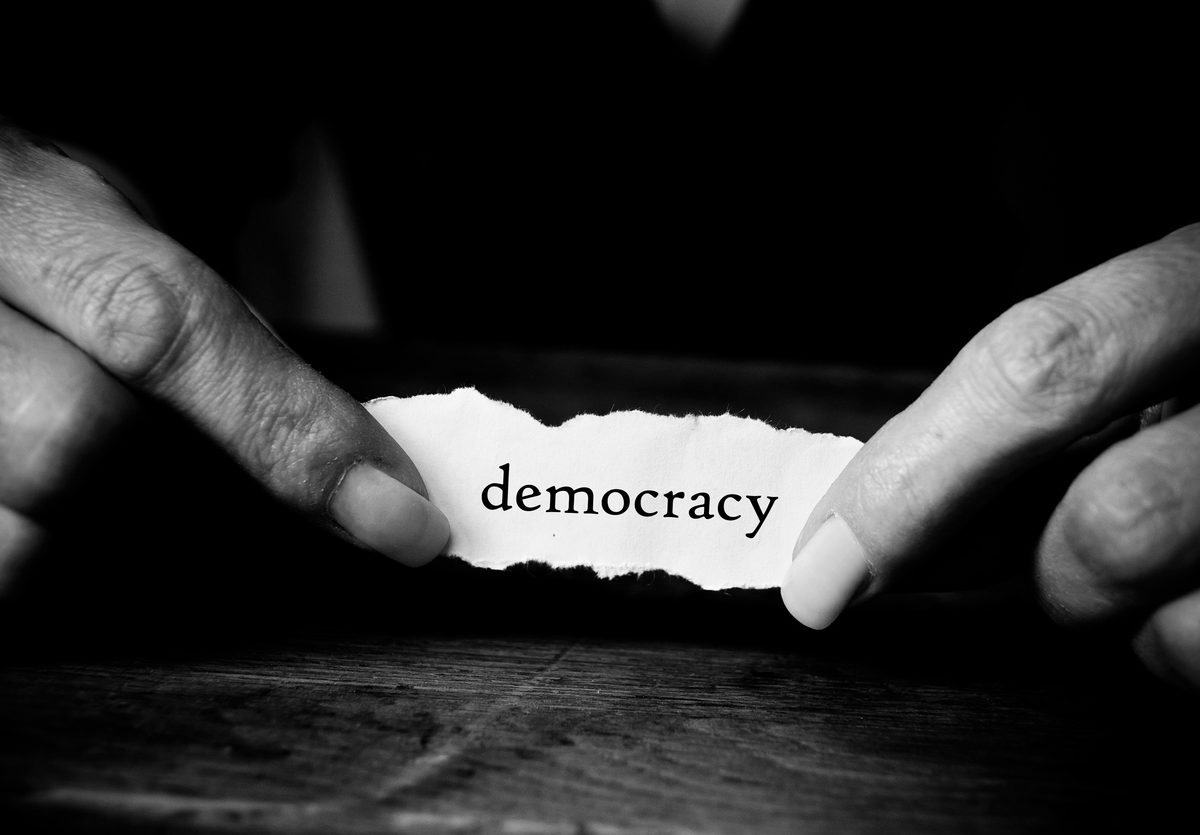
Democratizing Digital or Digitizing Democracy in 2025?
In 2023, I wrote about the OGP Global Summit in Tallinn, Estonia, and its focus on digital democracy. Estonia put digital democracy on center stage, showcasing e-Estonia and the digitization of government services such as legislation, voting, education, justice, healthcare, banking, taxes, policing, etc. e-Estonia is an example of digitizing democracy.
Also prevalent at the 2023 Summit was the concept of democratizing digital, or ensuring that digital tools, platforms, and policies are made and governed in ways that reflect democratic values. Open government and digital democracy can improve transparency, accountability, and participation in society. However, open government mechanisms and digital democracy must be usable, accessible, and inclusive.

Former Estonian Prime Minister Kaja Kallas delivers her keynote at the 2023 OGP Summit (Image: OGP)
As we approach the 2025 OGP Summit, the Government of Spain and Cielo Magno have prioritized the themes of People, Institutions, and Technology & Data. These themes signal that democratizing digital and digitizing democracy remain cornerstones for building resilient, effective, and trusted institutions.
However, the Summit takes place amid a backdrop of democratic backsliding, decreasing institutional trust, and increased influence of Big Tech on policy. By continuing to apply technology to problems that require “people” solutions, distrust in institutions will continue. My theory remains that if democratic principles are applied to digital government, then institutions will be stronger, more effective, and more accountable.
What’s Changed Since 2023?
Three key developments have had a significant impact on digital democracy. First, governments globally are grappling with how to invest in and leverage AI – and more specifically, generative AI – for economic growth and service delivery. From racing to build data centers, to appointing an AI bot as minister in Albania, governments globally do not want to be left behind in the AI divide. Second, Digital Public Infrastructure (DPI) has gained traction and investment to expand access to services, improve efficiency, and foster innovation by providing the “digital highways” for identity, payments, and data. Third, global leadership shifts have fundamentally changed approaches to regulation, digital sovereignty, protections, and sustainability.
Funding cuts from USAID resulted in the loss of millions of dollars in digital and data programming, as well as forecasted programming and subsequent resources aimed at advancing digital democracy. Cuts from bilateral donors, along with a cacophony of geopolitical dynamics, technological advancements, and regulatory policies, have prompted a focus on digital sovereignty, in turn putting more governments in the driver’s seat of digital decision-making.
Promises and Risks for Digital Democracy: Making Democracy Work, digitally
For those of us who have worked in digital democracy through multiple hype cycles, we have seen technology promise and fail to solve complex problems such as corruption, inclusion, and poverty. AI will not fix government shortcomings. By promising that technology can solve problems, and then in turn failing, institutions are breaking promises to citizens and stakeholders, thereby further eroding trust.
Using Digital to solve the right problems
Advocates for digital democracy should be promoting tech-assisted government, seeking improvements, not replacement. When equipped with the right tools at the right time, AI can transform efficiency and effectiveness. Automated document processing (ADP) tools, for example, can manage paperwork, reducing staff workloads and errors. According to an Amazon Web Services case study, the Illinois Institute of Technology (IIT) reduced transcript processing times from several weeks to just one day using AI-powered automation. IIT automated their entire workflow from document intake through to student record updates, international grade conversions, and customer relationship management (CRM) integration. This streamlined process reduced the prospective student credential evaluation process from 4-6 weeks to a single day. Transforming efficiency and reducing errors has the potential to improve government delivery and trust if done with rights-respecting processes and technology.
However, trust in AI is not universal. The 2025 Edelman Trust Barometer shows that nearly 1 in 2 are skeptical of the use of AI in business. Those with high levels of grievance have even deeper distrust of AI. Therefore, applications of AI for government, while having the potential to improve efficiency, may further erode trust. This risk is heightened when AI tools are created in a black box without transparency.
Bridge the deepening divide
AI and DPI are expanding, but their perceived and actual benefits are uneven. Without rights-driven values embedded into technology, the solutions risk reinforcing the inequities they aim to address. For communities without reliable connectivity, digital literacy, or protections, AI and DPI can deepen exclusion. Digital-only ID systems may exclude those without access to the internet, particularly impacting women and girls. AI is perceived as a driver of manipulated information, pervasive in democratic elections. Tools are more sophisticated, and protecting civic discourse is harder than ever. Without safeguards against misinformation, harassment, and manipulation, AI can be used to further target, discredit, and exclude voices.
Reflections for moving forward
To make democracy work digitally, the Open Government community should:
- Promote hybrid digital and non-digital approaches that enable institutions to work better and more transparently, not replace them.
- Deploy digital and AI tools for specific problems, not as blanket solutions.
- Embed human rights values in design, regulations, and oversight of digital systems.
- Prioritize sustainable funding and local ownership to ensure digital democracy endures.
Digital democracy faces profound promise and risk. Using technology as a tool to deliver on government promises can build institutions. Democratizing these tools ensures that systems reflect and reinforce democratic values. By democratizing digital and digitizing democracy, we can advocate for and build trusted, resilient, and inclusive institutions.